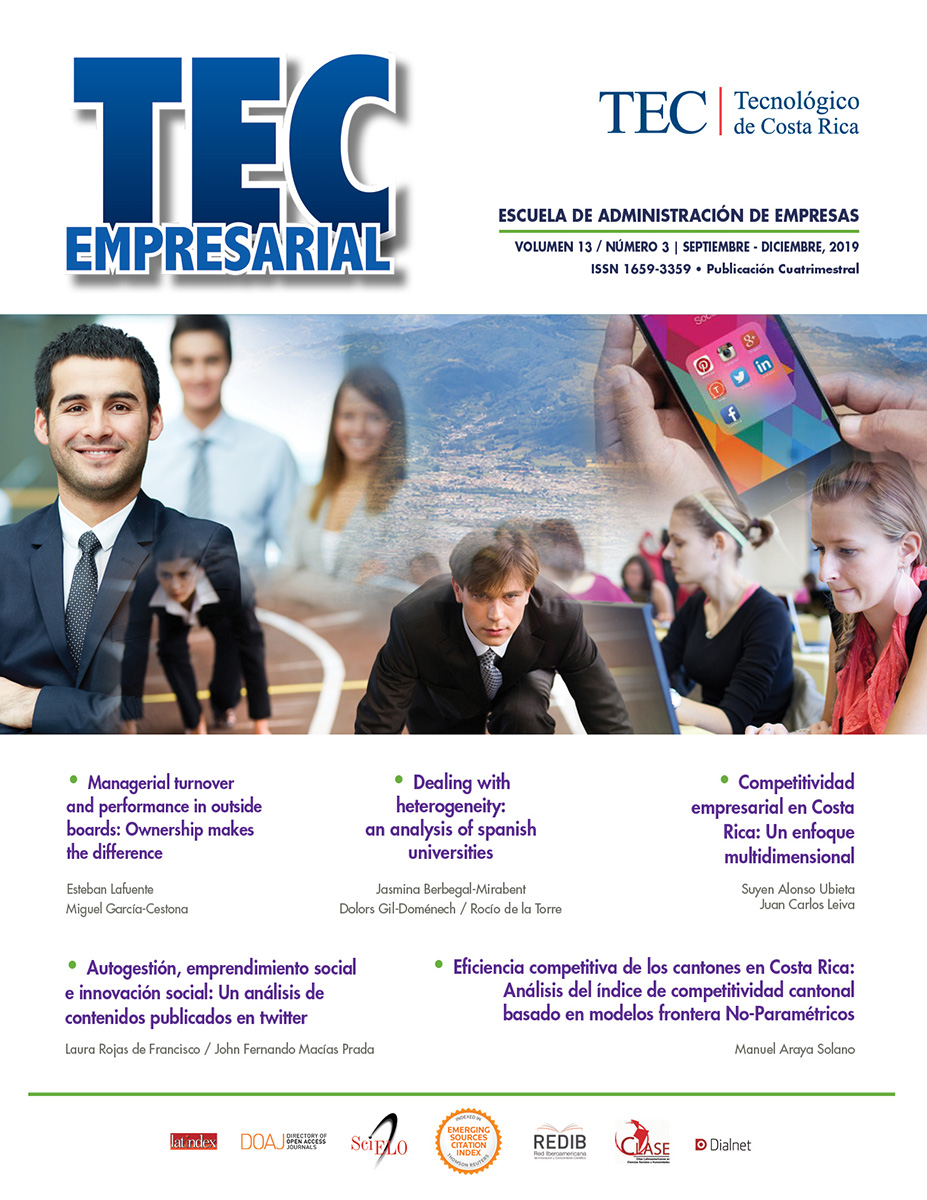Dealing with heterogeneity: An analysis of Spanish universities
Main Article Content
Abstract
Universities are highly dependent on regulatory frameworks, the geographical setting as well as on requirements for the creation of the different outputs they pursue. As a result, universities are heterogeneous organizations. This study analyses universities’ heterogeneity in Spain. By using a dataset from the Spanish higher education system, we model the objective function of universities and investigate which factors help explain universities’ performance, in terms of the three missions that they mostly perform (teaching, research and technology transfer). Also, a cluster analysis is performed to categorise Spanish universities. The findings contribute to better understand the different behaviours shown by universities. The findings underline the heterogeneity of Spanish universities: while some universities focus more on formation (teaching) goals, other universities excel at disseminating knowledge through different scientific outputs. The study concludes with a detailed inter- and intra- group analysis.
Article Details
The digital version of the journal is registered under the BY-NC-ND 4.0 Creative Commons license. Therefore, this work may be copy and redistribute the material in any medium or format, as long as you give appropriate credit, provide a link to the license, and indicate if changes were made. You may do so in any reasonable manner, but not in any way that suggests the licensor endorses you or your use.
The authors keep the copyright and give the journal the right of the first publication and the possibility of editing, reproducing, distributing, exhibiting and communicating in the country and abroad through printed and electronic means. On the other hand, the author declares to assume the commitment on any litigation or claim related to the rights of intellectual property, exonerating of responsibility to the Business School of the Costa Rica Institute of Technology.


